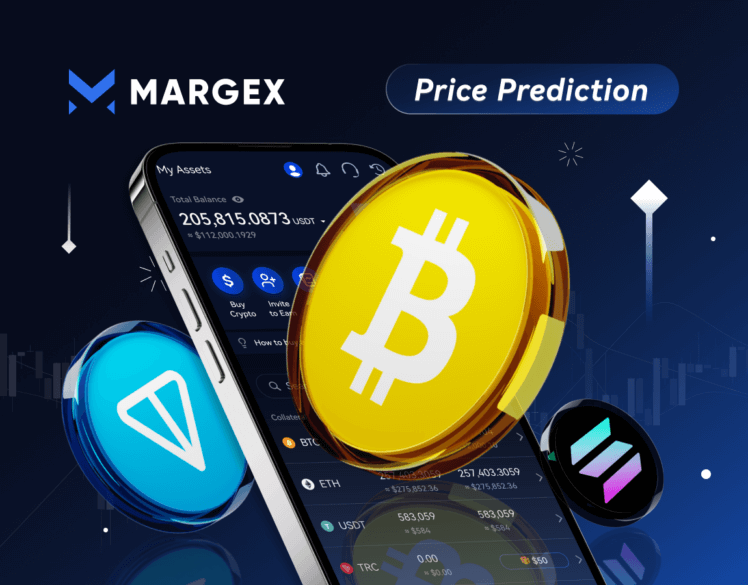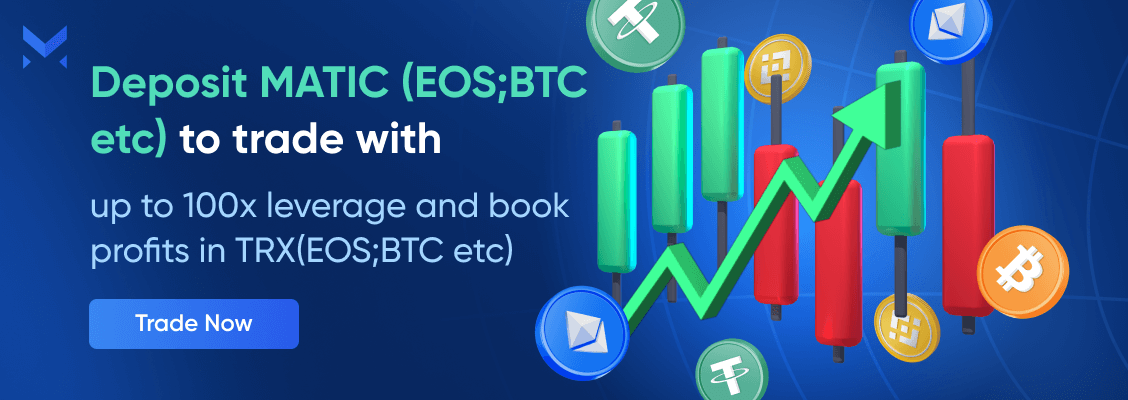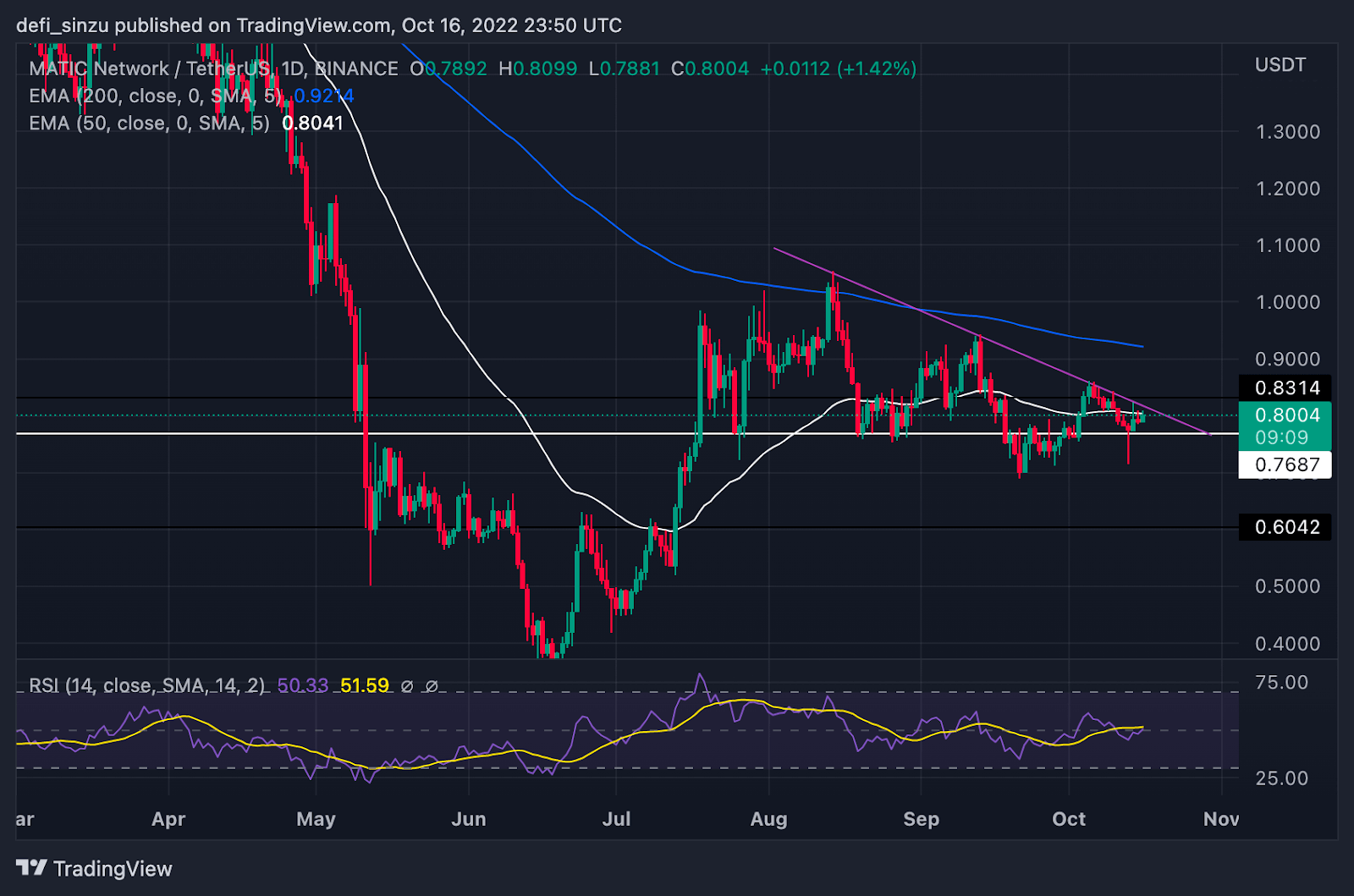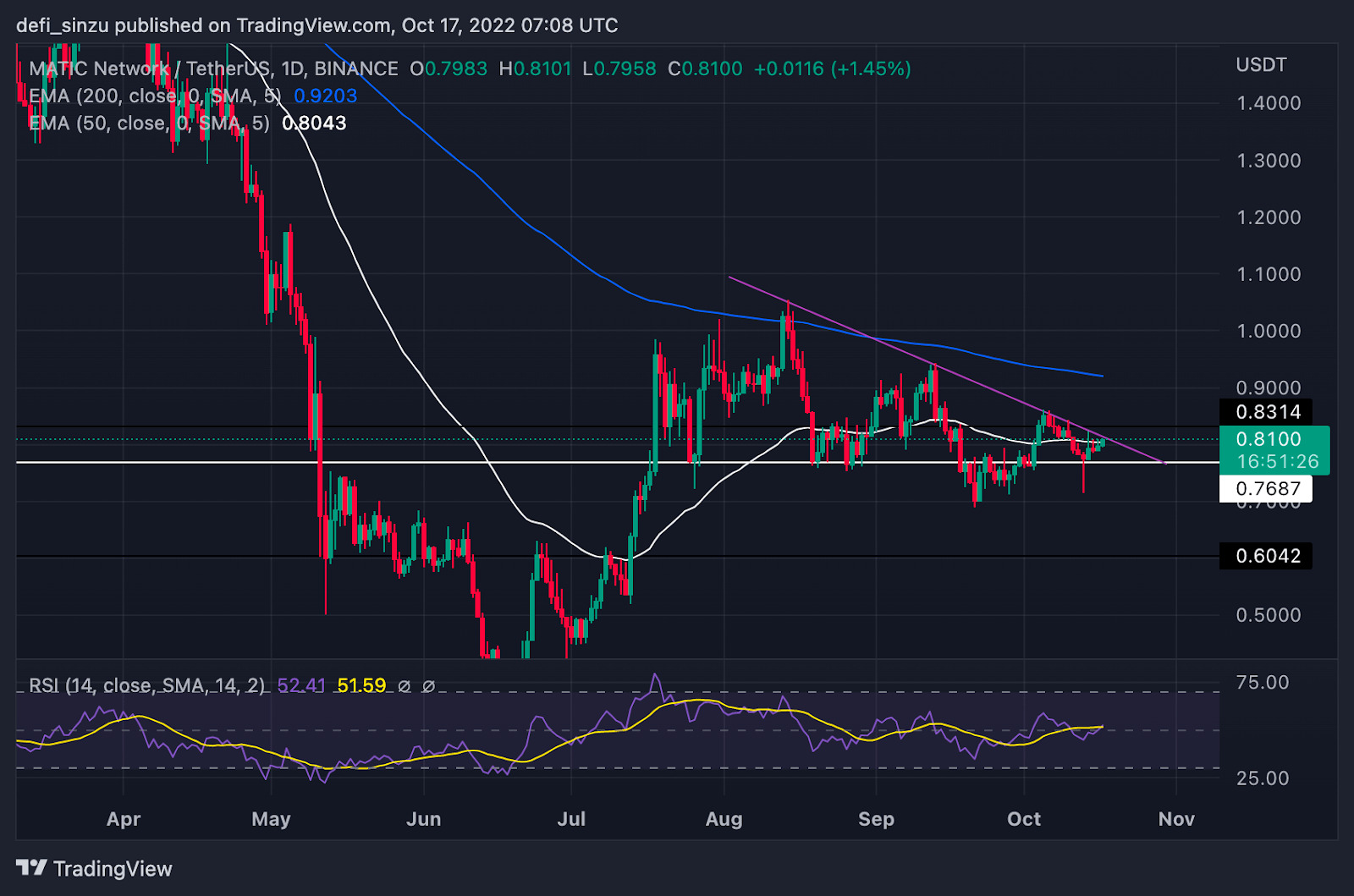
The 21st century has seen a big boom in innovation and wealth creation opportunities as blockchain and cryptocurrencies take on a global stage.
The adoption of cryptocurrencies built on the underlying blockchain technology has seen rapid growth as it surpassed a trillion-dollar milestone.
Cryptocurrencies and digital tokens have become investment options for a vast user audience who trade and hold these assets for potential future gains.
There are a variety of cryptocurrencies traded on global exchanges with a massive price potential and room for exponential growth.
The successes of Bitcoin and its shocking price growth have left many traders and investors speculating on the next big cryptocurrency with a price growth potential.
This has resulted in individuals and trade experts analyzing and making price predictions of cryptocurrencies traded on global exchanges and trading platforms.
Polygon (MATIC) is an example of one of the many cryptocurrencies traded and analyzed for its price potential in the cryptocurrency markets.
In this article, we will explore Polygon as a digital token, its price history, and future price predictions from expert analysts.
What Is Polygon (MATIC)?
Polygon (MATIC) is a decentralized framework and layer 2 blockchain solution built for scaling and linking Ethereum blockchain networks.
Polygon (MATIC) features a native token used to carry out borderless transactions across a network of users and pay transaction fees on its network.
Its native cryptocurrency, MATIC, is an Ethereum token built on the Ethereum blockchain ecosystem and powers the Polygon network.
As a Layer-2 solution to Ethereum layer 1 scalability challenges, Polygon(MATIC) was built to grow and scale the Ethereum (ETH) network and enhance its usability and scalability.

The Polygon (MATIC) protocol uses sidechains or blockchains that operate alongside the Ethereum main chain to facilitate quicker and cheaper transaction fees on the Ethereum blockchain network. With Polygon (MATIC) blockchain solutions, cryptocurrency and blockchain users and adopters can engage with various popular decentralized cryptocurrencies and applications previously restricted to the main Ethereum blockchain.
This is made possible through the Polygon (MATIC) bridging capabilities and functionalities.
Users can seamlessly bridge cryptocurrency assets to the Polygon blockchain platform via the official Polygon Bridge.
A variety of other Ethereum-based tokens can be deposited into a Polygon smart contract, used within Polygon, and then withdrawn back into the Ethereum (ETH) Mainnet.
Polygon (MATIC) is supported by an increasing number of decentralized financial applications in the crypto and blockchain industry.
Users of Polygon are assured of Polygon’s compatibilities with decentralized applications as various decentralized applications, such as Aave, Sushiswap, and Curve Finance, support Polygon. You can exchange Ethereum assets on the Polygon Bridge and keep track of your account balances on several networks.
The Polygon network leverages a unique Proof of stake consensus mechanism, which creates an additional layer of security and scalability for its sidechain and the Ethereum blockchain network.
Robust computer networks and validators securely verify and validate transactions processed on the Polygon (MATIC). Polygon (MATIC) users can take part in securing the Polygon network by becoming validators.
The first step to becoming a network validator on Polygon is through the staking of Polygon digital tokens and native cryptocurrencies.
Once a Polygon user becomes a network validator, opportunities are presented for earning Polygon (MATIC) native tokens as rewards for taking part in the validation process and securing the Polygon network.
Polygon (MATIC) users, who are invested in staking Polygon native tokens, have access to delegating other users as validators and share token rewards of Polygon (MATIC) between delegated validators.
Origin And History Of Polygon
The cryptocurrency and decentralized platform, Polygon (MATIC) was built and developed to provide Layer 2 scalability solutions to the Ethereum (ETH) blockchain network. Its unique native token, MATIC, ensures borderless transactions and bridging compatibility between multiple users and decentralized applications.
In October 2017, Polygon (MATIC), formerly known and registered as Matic Network, was introduced and launched into the Ethereum blockchain ecosystem. Three seasoned blockchain developers, Jaynti Kanani, Sandeep Nailwal, and Anurag Arjun, and a business consultant, co-founded Polygon (MATIC).
Jaynti Kanani, a co-founder of Polygon (MATIC), doubles as the CEO of the Polygon group and offers developer inputs and contributions to Polygon (MATIC) network.
The Polygon team made significant contributions to the Ethereum ecosystem before switching to its network in 2019. The group labored to put the widely-used Dagger event notification engine, the WalletConnect protocol, and the Plasma MVP on Ethereum.
Web3, Plasma, and the WalletConnect protocol were all implemented on Ethereum, owing to Jaynti’s work. Jaynti had previously worked in centralized systems as a data scientist before getting involved with blockchain.
What Protocol Polygon Uses
Polygon (MATIC) is a layer 2 solutions platform known for its high contributions and input to resolving scalability and usability issues on the Ethereum (ETH) blockchain network.
This unique set of solutions presented by Polygon (MATIC) is made possible and actualized through its modified protocol and unique consensus mechanism.
Polygon (MATIC) employs a distinct and modified Proof of Stake (POS) consensus mechanism, which aids throughput and high scalability of the Ethereum network.
Unlike other consensus mechanisms and Proof of Stake (POS) models, the Polygon (MATIC) unique Proof of stake consensus mechanism requires and allows many users and network participants to be validators through staking of Polygon (MATIC native tokens.
The increasing number of validators on the Polygon (MATIC) network allows for network efficiencies, as multiple validators process transactions at lightning speeds.
Polygon (MATIC) innovative solutions and Proof of Stake consensus mechanism create a win-win situation for validators and scalability efficiencies of the Ethereum (ETH) blockchain network.
Network participants, who are validators, are rewarded through Polygon (MATIC) native tokens and earn a passive income from validating and securing transactions on the Ethereum and Polygon network.

What Makes Polygon Different From Other Cryptocurrencies
A variety of cryptocurrencies traded on global exchanges and platforms have varied aspects of uniqueness and utility that set them apart.
Polygon (MATIC) is one such cryptocurrency and decentralized platform with the unique attribute of rendering innovative scalability solutions to the Ethereum blockchain network.
The first significant difference between the Polygon native token from other cryptocurrencies is that it is an ERC-20 token.
The ERC-20 is a distinct set of guidelines and standards for building and creating fungible tokens on the Ethereum blockchain network.
Many technical standards exist for building and deploying tokens into the blockchain, with ERC-20 being the most popular out of the lot.
Polygon (MATIC) is a Layer 2 scalable solution to the Ethereum network and delivers on its core functionality of throughput and interoperability between other blockchain layers and decentralized applications (Dapps). It has a groundwork that focuses on reducing the complexity of scalability and making blockchains more compatible through its bridging protocol.
The Polygon (MATIC) protocol employs a customizable plasma infrastructure model built on a Proof-of-Stake (POS) consensus mechanism that runs through the Ethereum mainnet.
This unique innovation of Polygon (MATIC) allows each sidechain on Polygon to achieve up to 65,536 transactions per block.
Most cryptocurrencies and projects in the global cryptocurrency markets, are gradually tilting and migrating to a low carbon efficient and low footprint mechanism.
This is a result of the high energy and unsustainable power consumption rates most consensus mechanisms require.
Polygon (MATIC) differentiates itself by employing standard and environmentally friendly protocols and Proof of Stake consensus mechanisms.
Polygon (MATIC) is one of the many protocols achieving energy efficiencies and a low carbon footprint in the earth’s ecosystem. Polygon follows through with its mandate of sustainability and Eco-utility for its protocol and blockchain.
Polygon pledged $20 million for a number of blockchain community projects and scalable innovations that will integrate Web3 technologies to create a sustainable decentralized ecosystem. To further expand on Polygon’s sustainability goals, the Polygon team partnered with Klima DAO, which led to a purchase of carbon credits worth $400,000 to address climate change.
KlimaDAO is a decentralized ecosystem of environmentalists and developers looking to modernize and scale a green economy and ecosystem through blockchain technology applications.
Factors Influencing Polygon Price Growth
The global cryptocurrency and financial markets are a playground for new and existing cryptocurrencies deployed onto the blockchain ecosystem.
For many, trading cryptocurrencies are a medium for wealth creation and life-changing opportunities, as the growth potential of these assets could generate maximum yield and ample returns on investments.
Numerous variables affect and contribute to the constant price fluctuation in cryptocurrencies traded on the financial markets, global cryptocurrency exchanges, and trading platforms.
Polygon (MATIC) is one such digital token, among others, subject to several variables that affect its price potential, either positively or the other way around.
Some of the factors that drive the price growth potential of Polygon (MATIC) are explained below;
Demand
The price growth potential of any cryptocurrency or digital token is significantly influenced by the volume of demand for that cryptocurrency.
When making trade decisions and investments into cryptocurrencies, investors and traders may need to consider the volume of demand for and trading activity surrounding a particular cryptocurrency.
High market demand cryptocurrencies have a favorable price reflection and, over time, help to drive up their overall price growth.
Polygon (MATIC) features a unique utility of scalability and compatibility with the blockchain ecosystem and decentralized applications.
Many investors, cryptocurrency traders, and users are drawn to the utility and use cases of particular cryptocurrencies and can perceive the future price direction due to potential demand.
Often when there is a high volume of demand for a particular cryptocurrency, a massive spike and price increase occurs almost immediately.
The demand for cryptocurrencies is an essential factor to be considered when making investment decisions on cryptocurrencies.
At the time of writing, the global cryptocurrency markets are in a downward and bearish cycle resulting from selloffs and low demand for the purchase of cryptocurrencies.
The price growth potential of Polygon (MATIC) might seem bleak and sluggish due to low demand as the general cryptocurrency markets experience a bear market.
The cryptocurrency markets operate in bull and bear cycles, a positive bullish price reversal of the cryptocurrency markets will see Polygon (MATIC) recovering in price accordingly.
Usecase
The crypto and blockchain industry accommodates a wide range of cryptocurrencies with a broad spectrum of real-life applications and use cases.
A digital token or cryptocurrency’s utility and use case plays a vital role in boosting popularity and the volume of demand it accrues to itself.
Polygon (MATIC) continues to attract value and massive popularity in the blockchain industry as it seeks to render layer 2 scalable solutions to the Ethereum blockchain sustainably.
High Scalability efficiencies are one of the significant features lacking in the Ethereum blockchain. Polygon (MATIC) is addressing these challenges facing Ethereum and looks to offer more solutions to interoperability between layers and blockchains.
Blockchain solutions and real-time applications of Polygon (MATIC) are some factors considered by the Polygon community and investors before choosing Polygon(MATIC) as an investment option.
Popularity and massive adoption resulting from a cryptocurrency’s real-time utility and use case may also drive the demand for that particular cryptocurrency.
Partnerships And Visions
Strategic partnerships and collaborations by a crypto project are a clever play for driving the price growth potential of a cryptocurrency or digital token.A clear and proper vision would also enable the project team to deliver on key milestones of a cryptocurrency project.
Polygon (MATIC) is strategic regarding team building, innovative partnerships, and collaborations in the blockchain industry.
One of the key highlights of an innovative partnership is the Polygon team partnering with Klima DAO.
The Klima DAO is a decentralized platform and collective of sustainability experts, environmentalists and blockchain developers, evolving and bridging the crypto and carbon space through blockchain technology.
Polygon (MATIC) aims to operate and carry out its functions in the blockchain industry by utilizing low-energy consensus mechanisms and other sustainable energy approaches.
Polygon Price Performance In The Past

Two years after the Polygon (MATIC) network went live on the Ethereum blockchain, in 2019, the Polygon native token MATIC made its debut through an “initial exchange offering” (IEO) hosted on the Binance exchange Launchpad platform.
With a 3.23 billion MATIC token supply at the time, the starting price of MATIC was $0.00263. The project received more than $5 million from the sale.
In May 2021, three months after the project underwent a significant rebranding from Matic Network to Polygon Network, MATIC’s price reached an all-time high of $2.40.
The bull markets, which scaled up in February, saw the price of Polygon (MATIC) soar by more than 7,000% to its all-time high at the beginning of May 2021.
As the euphoria of the bull markets continued, the cryptocurrency markets decided to take a downturn, which saw the massive price drop of nearly all cryptocurrencies traded in the markets, including Polygon (MATIC).
The following months after the cryptocurrency market crash saw a slight recovery of the markets as Bitcoin surpassed its all-time high.
The cryptocurrency markets experienced another crash as many cryptocurrencies lost over 90 percent in price value from their all-time highs.
The resultant effect is a bear market cycle which has continued in the following months of 2022.
From the chart above, MATIC trades below its all-time high of $2.40 due to the current bear market that has affected the price of most crypto assets.
How Is Polygon Doing Now?

Polygon (MATIC) price is currently trading at $0.81 and appears to have formed a descending triangle indicating huge price action as a breakout from its downtrend could mean a massive run for its price.
The majority of cryptocurrencies are now trading at or around all-time lows as the cryptocurrency market as a whole is in a bear market. For Polygon (MATIC), its current price at $0.81 at the time of writing, shows more than a 50% decrease from its all-time highs.
Compared to other cryptocurrencies in the general cryptocurrency markets, Polygon (MATIC) has shown positive strength despite the bear market.
In recent times, Polygon’s (MATIC) strength in the cryptocurrency markets can be seen from its little back-and-forth price pumps to the $1 mark and then retraces in price. Polygon (MATIC) is trading at a low of $0.81 due to a bear market and negative market sentiment.
The cheap costs and chances offered in a bear market may be exploited by traders and investors wishing to invest in cryptocurrencies. Traders and investors that take advantage of buy opportunities given in a bearish market are always favored by bull cycles or bullish markets.
Polygon Price Prediction Today
At the time of writing, Polygon (MATIC) had a 24-hour low price of $1.1 and is currently trading at $1.2 in price value.
Before falling down to a price range of $1.2, Polygon’s price rose to a 24-hour high of $1.25
Market analysts came up with Polygon price predictions for today, February 7th, 2023, and expect Polygon (MATIC) to climb to a price range of $1.25 and $1.3.
Polygon Price Prediction For February 2023
The table below depicts the Polygon price prediction for the first week of November 2022.
Traders and investors must conduct due diligence or personal research on a cryptocurrency before making investment and trade decisions.
Polygon Price predictions and estimates from experts may not be accurate sometimes as market sentiments and trade confirmations change from time to time.
Short-Term Polygon Price Prediction For 2022
The majority of cryptocurrencies are trading in a range and are approaching all-time lows, thus the short-term forecast for the cryptocurrency markets is slightly pessimistic.
The average MATIC price forecasts for the months of February 2023 are shown in the table below. These MATIC price predictions or forecasts are speculative and may alter in response to fresh information and market sentiment.
Despite the market downtrend in 2022, MATIC has proven to be one of the best altcoins that have remained strong, and its community continues to build despite the uncertainty present in the crypto market. With a huge investor and partnership backing in 2022, the price of MATIC looks like a bargain and would do well when the market regains its bullish momentum.
Long-Term Polygon Price Prediction For 2023
In the cryptocurrency industry and global markets, a lot of traders and investors are anticipating 2023 and its deliverables as the bulk of cryptocurrencies continue to fall in a downturn and bearish cycle.
The Polygon price predictions in the table below are solely theoretical and cover the months of 2023. Polygon MATIC price predictions may change from time to time depending on market sentiments.
Long-Term Polygon Price Prediction For 2023 – 2030
As blockchain technology and cryptocurrencies continue to gain popularity and mass adoption, expert analysts began to look into Polygon price predictions as well as for other cryptocurrencies.
Polygon price predictions or MATIC price forecasts are seen in the table below for the years 2023, 2024, 2025, 2026, 2027, 2028, 2029, and 2030.
Long-Term Polygon Price Prediction By Experts
To aid investment decisions and reduce risk of cryptocurrency investments, traders and investors can refer to a wide range of Polygon price predictions and forecasts offered by expert analysts on different cryptocurrencies.
It is also important to note that cryptocurrency price forecasts and predictions may not always be precise as these price predictions are made by human trade specialists whose predictions and judgments are subject to flaws.
No human being is able to foretell the future of cryptocurrency values in the financial markets with flawless accuracy and precision.
Predictions of future prices of cryptocurrencies are based on technical and fundamental analysis. Traders and investors are advised to always conduct personal research into Polygon price predictions and other cryptocurrencies.
Polygon Price Forecasts By Price Prediction
Market experts and trade analysts at Price Prediction have a positive and prospective view of Polygon price predictions in 2030. According to research by expert analysts at Price Prediction, the price of Polygon is anticipated to go as high as $19.42 in 2030 or possibly trade at an average price of $16.6.
Price Prediction By Government Capital
Price experts and market analysts at Government Capital came up with positive futuristic Polygon price predictions. Their researchers predict that Polygon might trade at $3.7 per coin by 2023 and reach $20 in 2028.
Price Prediction By AMB Crypto
Trade specialists and expert analysts at AMB Crypto have a positive outlook on Polygon price predictions.
Based on research from price experts at AMB Crypto, the average price of Polygon (MATIC) in April 2023 will be $4.24, and the highest price that can be predicted is $4.53.
AMB Crypto experts have also recorded a long-term view on Polygon prices. They foresee Polygon’s (MATIC) price to trade at a high of $22.82 or at an average price of $15.22.
Price Prediction By Wallet Investor
According to expert analysts, the Polygon price predictions are placed at a minimum price value of $28.76, an average price value of $29.75, and a maximum price value of $33.28 in 2030.
Price Prediction By Margex

Margex is a bitcoin-based derivatives exchange that allows traders to trade crypto assets up to 100X leverage size and stake these tradable crypto assets to earn up to 13% APY. There are no lockup periods, and staking rewards are sent to the staking balance daily. This allows beginners also to make money using Margex’s unique staking feature.
Despite having a tough time due to the current bear market, technical analysts on Margex see the price of MATIC doing well based on their partnerships and past price actions, as these would play a key role when the crypto market bounces to its previous state.
Frequently Asked Questions On Polygon Price Potential
Here are the common questions traders and investors ask as regards the potential of MATIC.
Will Polygon Matic Reach $100?
The Polygon MATIC price prediction is mostly controlled by the volume of demand on its native token.
In determining whether MATIC price predictions and its actual price will trade at $100, other factors such as the total supply of cryptocurrency and digital tokens can give insight into exponential growth.
Investors and traders may get insight into the possible price values of Polygon from a variety of market experts and trade specialists.
Traders and investors are advised to conduct due diligence and personal research as MATIC price predictions from individuals and expert traders may not be precise.
What Will Polygon Be Worth In 2025?
Many trade experts and crypto enthusiasts have made several Polygon price predictions in recent years.
Polygon price prediction is seen between the $10 and $15 price range according to expert analysts.
These Polygon price predictions may not be precise and fully accurate as changes in market sentiments are a constant feature.
What Will The Price Of Polygon Trade At In 2030?
Polygon price predictions are among the many cryptocurrencies for which their price value is being forecasted.
To get a better picture illustration of Polygon MATIC price prediction, some investors and traders may consult market analysts on the possible price points of Polygon in 2030.
According to some trade experts and price analysts in the cryptocurrency industry, Polygon MATIC price prediction is set between $15 and $23.
What Will Polygon Be Worth In 5 Years?
Polygon MATIC price forecast is seen to be a major explorer for many investors in the cryptocurrency industry.
Polygon’s added value to the blockchain industry and may likely scale up and result in positive MATIC price predictions, as more and more traders and investors make on-demand purchases.
Depending on market sentiments and cycles of the cryptocurrency markets, Polygon’s price predictions may still remain positive in the next five years as blockchain adoption increases.
Investors may need to conduct personal research on a cryptocurrency and may also consult price expert analysts on Polygon MATIC price prediction.
Does Polygon Crypto Have A Future?
Cryptocurrencies in general, including Polygon (MATI), have a high potential for growth as a result of mass adoption and increased utilization.
Polygon (MATIC) has a huge potential as it offers layer 2 scalable solutions to the Ethereum blockchain as well as compatibility between blockchain layers.
Polygon (MATIC) has been on the radar of many market experts, compiling different Polygon price predictions for traders and investors in the crypto community.
How High Can Polygon Get?
How high a cryptocurrency value can attain is dependent on a number of factors such as increased demand, market sentiments, bull cycles, and strategic partnerships.
The price value and growth potential of Polygon are dependent on these factors and price influencers.
Applying knowledge of fundamental and technical analysis can also help traders in measuring Polygon’s price growth, and price performance in the past as well as the use of technical indicators that point to a significant price move.


